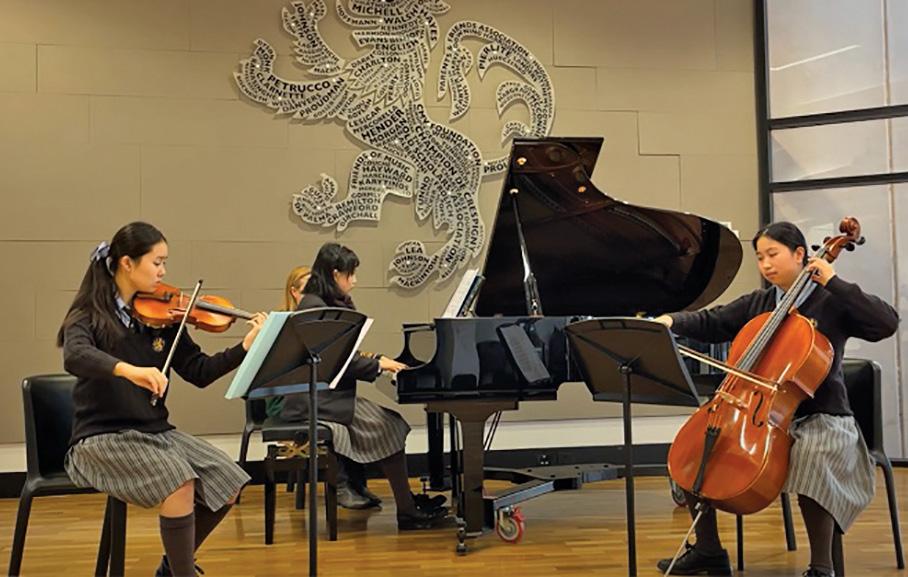18
Wilderness Times | Winter 2021
PHYSICS STUDENTS VISIT THE AUSTRALIAN SPACE FORUM On Wednesday 31 March, a group of Senior School Physics students had the privilege of attending the Australian Space Forum at the Adelaide Convention Centre, accompanied by Mr David Pyman and Miss Elyse Purkis. We had the opportunity to learn about current and future careers within the fast-growing space industry, with many key organisations and job prospects based right here at Lot Fourteen in Adelaide. It was a valuable experience to be able to participate in the Space Passport session, where we could interact with different booths at the forum to find out more about all the interdisciplinary fields in the industry. This allowed us to chat with experts and discover pathways to a career in their field or company. It was exciting to see this industry emerging in South Australia and we all left the forum with (lots of jellybeans) and new knowledge about the space industry. Annecy Cheung , Year 11
During their visit to the Australian Space Forum, Senior School Physics students were thrilled to see two Wilderness Old Scholars, Melarn Murphy (2017) and Tori Tasker (2012), attending as space industry specialists. We took the time to ask Melarn and Tori about their journey into the industry. It was enjoyable enough, but I soon realised I was not passionate about it and did not feel drive and excitement. I knew that no matter what I pursued, I wanted it to be something I was excited about, so I moved into a Bachelor of Archaeological Practice specialising in forensic anthropology.
Tori Tasker (2012) Senior Programs and Operations Officer, Australian Space Agency Something that was very apparent to me through my schooling was that I loved both sciences and humanities. It was often quite easy to feel that my future career could only be in one of those rather than in both. Understanding that sciences and humanities have immense crossover was crucial in beginning the career path I am now on. I started university in the sciences, with biology, chemistry and psychology.
I spent the following two years of my degree unearthing human bones at mock crime scenes, unpacking the intricacies of past civilisations across the world and learning about how we think about our own past and the narratives that get told. It changed how I thought about the world and reinforced how positive and productive I was when doing what I loved. The moment that changed the trajectory of my career and life was quite a mundane one. At the end of my undergraduate degree, I bumped into a friend with whom I had been through my archaeology degree with. I simply asked her what she was planning on doing following graduation. She told me she was pursuing a Master of Museum and Heritage Studies.
It was an absolute light bulb moment for me. I had no idea this degree existed, but I had always loved museums and it was quickly very clear to me that this could be a great career path for me to pursue and explore everything I had studied so far. With a slight obsession with learning, I decided to undertake a Master of Museum and Heritage Studies to pursue a new world I had stumbled upon – science communication. I had finally found the place where humanities and science combined for me. I spent the following year understanding the methods and practices behind storytelling, exhibition design, public engagement and science education – I was truly in my element. During my internship at Mount Stromlo Observatory, the National Museum of Australia and the Melbourne Planetarium, I soon realised that space was the place for me. Space is an incredible, aweinspiring context for both sciences and humanities, and I was thrilled to have found this world to be part of.
››››

















